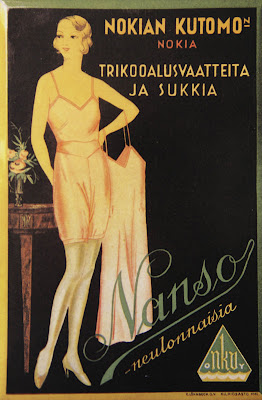We have some lovely friends, a Canadian couple of Finnish heritage. Until I knew them well, all I could tell you about Finland was that the flag is blue, the people like to sauna and they have good hockey players. I have a vague memory of a Finnish architect who designed the Toronto City Hall, just don't ask me to recall his name. In recent years, I have experienced cloudberries, salt fish and Finnish pancakes and I have learned so much more.
During one of their visits, we all went for a walk at the waterfront park. It was then that our friends noted the trash containers which originated in Finland. These ingenious cans come in several sizes. They look like regular bins, but what's different is that they extend as far below the ground as above. This model holds a 6 foot long trash bag. That's a lot of garbage, and a brilliant way to prevent overflow in parks and playgrounds between pickups.
This clever trash solution originated in Nokia, a brand of telephone, yes, but also a city in Finland.
There is a large Finnish population in Thunder Bay where our friends live. When we visited, we were taken to Finnport to shop. It's a beautiful store that sells unique textiles, housewares, glass items and other products from Finland. Then we went to the historical Hoito Restaurant in the Finlandia Club for a meal. The Hoito has many claims to fame. The latest of these are last year's visit from Rick Mercer and an appearance on a Food Network episode of "You Gotta Eat Here". The Finnish pancakes are famous and the menu is varied. The Hoito is a co-operatively owned and run restaurant which was established over 90 years ago to provide inexpensive home cooked meals to the Finnish-Canadian loggers and carpenters in the community.

March 16th is the time for St. Urho's Day celebrations. According to the legend St. Urho chased the grasshoppers out of Finland thus saving the grape crops. It's a great reason for partying, having a parade, and donning the colours purple and green to represent grapes and grasshoppers.
Kaleva Michigan and Menahga, Minnesota have tributes to St. Urho in the form of a gigantic scrap metal grasshopper and an enormous wooden sculpture. It's a fun festival which is rapidly spreading throughout North America.
I had often heard about the Finnish brand "Nanso" and the comfortable, soft and silky feel of the products. The company specializes in men's and women's loungewear and some of the clothing is created with a woven combination of cotton and modal yarns, both renewable resources. After further research, I was impressed that the company uses fair trade principles and cotton farmers in the developing countries are paid a guaranteed price. Nanso has existed for 90 years and has its headquarters in....Nokia.
So those are just a few of the things I've learned about from our friends. I also now know that whenever I see an item on the news about wife carrying contests, cell phone tossing competitions, or air guitar playing championships, chances are that it's coming from Finland.
So on this occasion of our friends' 55th wedding anniversary, I'd like to say, "
Hyvää Vuosipäivää". It's wonderful to know you, learn from you, spend time with you and laugh with you. Oh...and it's also fun to visit and sauna with you.































































